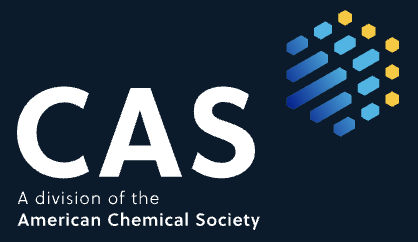Riskli Gebelik Nedeni ile İzlenen Annelerden Doğan Preterm Bebeklerin Erken Dönem Morbidite ve Mortalite Sonuçları
Sultan Kavuncuoğlu1, Erkut Öztürk1, Esin Yıldız Aldemir1, Yavuz Ceylan2, Sibel Özbek11Bakirkoy Woman And Child Education And Research Hospital, Neonatology Clinic2Bakırköy Woman And Child Education And Research Hospital Gynecology Clinic
OBJECTIVE: To compare the prognosis of the preterm patients born of pregnancies with problems during antenatal period and born of pregnancies followed by perinatology unit.
METHODS: Preterm patients followed by perinatology unit from January to August 2005 and born at our hospital (Group I) and preterm patients not followed during perinatal period (Group II) were studied retrospectively. The groups were composed for maternal, perinatal and postnatal factors. The risk factors of mortality and morbidity were studied. p<0.05 is accepted as statistically significant 424 pregnant women were followed between January-August 2005. Group I was composed of 473 preterm infants (45 of them were multiple pregnancy) and Group II was composed of 240 preterm infants. There were no differences about age, gravida, gender, delivery method and weight of birth between two groups. Maternal age was 28±5.4, gravida (1-11) was 2.4. PROM 43.1 %, pre-eklampsia 26.8 %, diabetes mellitus 10. 4 % were the leading risk factors of the pregnant women.
RESULTS: The most important perinatal risk factors were fetal distress 27.8 %, oligohidroamnios 19.1 %, IUGR 17.2. RDS (Respiratory Distress Syndrome), septicemia, hypoglisemia, NEC (Necrotizan Ente-rocolit) were significantly higher in Group I. Preterm patients in Group I stayed in hospital for a longer period (p< 0,05). Mortality ratio in Group I was 9.5 %, 11.6 % in Group II (p>0.05).
CONCLUSION: We determined that preterm patients followed during antenatal period were born at earlier gestational week,stayed in hospital for longer period and had a higher morbidity rate. The most important morbidities were respiratory problems, septisemia and NEC in both groups. Mortality ratios were higher at 24-28 gestational weeks in Group I, 33-36 gestational weeks in Group II.
Keywords: perinatology, preterm, mortality, morbidity
Riskli Gebelik Nedeni ile İzlenen Annelerden Doğan Preterm Bebeklerin Erken Dönem Morbidite ve Mortalite Sonuçları
Sultan Kavuncuoğlu1, Erkut Öztürk1, Esin Yıldız Aldemir1, Yavuz Ceylan2, Sibel Özbek11Sb Bakırköy Kadın Ve Çocuk Hast. Eğitim Ve Araşt. Hastanesi, Neonatoloji Kliniği2Sb Bakırköy Kadın Doğum Ve Çocuk Hast. Eğt. Arş. Hastanesi Kadın Hast.ve Doğum Kliniği
AMAÇ: Perinatoloji ünitesinde riski nedeni ile izlenen gebelerden doğan prematürelerle sorunsuz gebelik sonrası doğan prematür bebeklerin prognozunu incelemek.
YÖNTEMLER: Ocak - Ağustos 2005 tarihleri arasında perinatoloji ünitesinde izlenip hastanemizde doğan prematürelerle (Grup I) ve izlemi olmadan doğan (Grup II) prematüreler retrospektif olarak çalışmaya alındı. Maternal, perinatal ve postnatal faktörler yönünden gruplar karşılaştırıldı. Mortalite ve morbiditeye etki eden risk faktörleri araştırıldı. İstatiksel anlamlılıkta p<0.05 kabul edildi.
BULGULAR: Ocak-Ağustos 2005 tarasında 424 gebe perinatoloji ünitesinde izlendi. Kırk beşi çoğul gebelik olmak üzere 473 preterm Grup I, 240 preterm Grup II’yi oluşturdu. Gruplar arasında anne yaşı, gravida, cinsiyet, ort. gebelik haftası, doğum şekli ve ağırlığı yönünden fark yoktu. Maternal yaş ortalaması 28 (17-46) gravida (1-11) 2.4 idi. Maternal risk faktörlerinden EMR (Erken Membran Rüptürü) (% 43.1), preeklampsi (% 26.8), diabetes mellitus (% 10.4) ilk sıralarda idi. Fetal distress % 27.8, oligohidroamnioz % 19.1, intrauterin gelişme geriliği % 17.2 oranı ile en önemli perinatal risk faktörlerini oluşturdu. Prematürelerin % 3.4’ü yoğun bakım ünitesinde % 66’sı II. düzey ünitede ve % 30.6’sı anne yanında izlendi. Tanılar karşılaştırıldığında RDS (Respiratuvar Distress Sendromu), sepsis, hipoglisemi, NEK (Nekrotizan Enterokolit) sıklığı Grup I’de anlamlı yüksekti. Grup I’deki prematüreler hastanede daha uzun süre kalmıştı (p<0.05). Mortalite Grup I’de % 9.5, Grup II’de % 11.6 idi (p>0.05).
SONUÇ: Antenal dönemde izlenen riskli gebelerin preterm bebeklerinin; daha düşük gebelik haftasında doğduğu, hastanede daha uzun süre yattığı, morbiditenin daha yüksek olduğu saptandı. Her iki grupta solunum sorunları, sepsis, NEK en önemli morbiditelerdi. Mortalite Grup I’de 24-28 gebelik haftasında ve Grup II’de 33-36 gebelik haftasında yoğunlaşmıştı.
Anahtar Kelimeler: perinatoloji, riskli preterm, morbidite, mortalite
Manuscript Language: Turkish






















